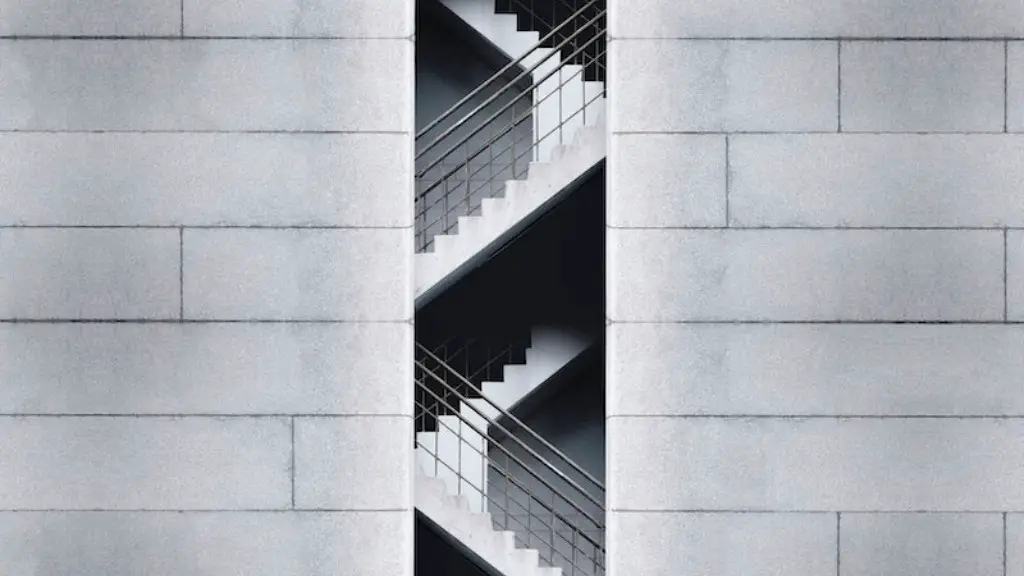Stupa architecture is a type of sacred monument found in religious spaces, particularly in Buddhist sites. It features a large tower that is usually constructed of stone and standing high on a raised platform. It usually has either a hemispherical shape, or it can be quite stylized, with rotating square tiers supported by an axial structure. The most common feature of a stupa is its dome, which symbolizes the cosmic mountain and connects the physical world with divine forces. The stupa is traditionally an important part of Buddhist ritual, and is often the focal point of a temple or monastery.
Stupa architecture is thought to have been developed around the 1st century BCE. Although stupas may have varied in design, their symbolism remained unchanged. The stupa is seen as containing three interconnected realms; the outer realm symbolizes the physical world, the inner realm symbolizes the metaphysical world, and the intermediate zone between the two symbolizes their transitory journey. The top of the stupa is seen as the culmination of this journey, a state of enlightenment.
Stupas were initially used to venerate the remains of the Buddha, to enshrine relics of his teachings, or to mark holy sites associated with the Buddha and his disciples. Over time, stupa architecture has evolved to become an essential part of many religious sites, and is not limited to Buddhism. Both Hinduism and Jainism venerate them, although they often feature architectural variations. Some stupas also feature distinctive decorative elements, such as caityas, kalas and yantras. Many of these elements are believed to have multi-faceted religious and spiritual meanings.
At its core, the stupa is less a physical building, and more a spiritual vessel for contemplation and meditation. It is often seen as a way of connected to the divine, and as a source of spiritual energy. For Buddhists, the purpose of the stupa is to draw the seeker closer to ultimate enlightenment. It has become a symbol of the path to knowledge, peace, and compassion.
The stupa architecture is also a major part of the tradition of pilgrimage in Buddhism, and a monument that connects to distant followers who, although they may not be able to physically visit the site, can still be connected in their minds. Stupas are seen as monuments of the journey, a way for seekers to meditate, contemplate, or simply spend some time in prayer or contemplation.
The practice of meditation at the stupa is one of the oldest parts of Buddhist tradition. Although stupas are often decorated with carvings and other decorations, meditation at the stupa often involves simply sitting and silently contemplating its beauty, and its symbolic placement between the physical and metaphysical worlds. Traditionally, Stupa mediation is associated with the concept of chakra, which relates to our life force and energy, and how it is connected to the universe.
Maintenance Of Stupa Architecture
Stupa architecture is meticulous in its attention and care, which is evident in their widespread survival since the first and second centuries BCE. Maintenance of stupa architecture is an important part of keeping the spiritual connection alive between the current keeper and original builder. This includes routine maintenance of the structure and grounds, and occasional restoration and refurbishment. This could include sculpting, enrichment of the landscaping, gardening, and sometimes even raising additional tiers.
The ritual nature of stupa preservation is a part of the spiritual process. It is closely tied into the maintenance of Buddhist monasteries and temples, when local communities and volunteer pilgrims come together to work on a single project. By working together, these people strengthen the connection between themselves, the temple and stupa, and the Buddha’s teachings.
In recent years, conservation and preservation of stupa architecture has been a priority for Buddhists and scholars alike. In some cases, renowned architects and engineers are commissioned to develop specific plans for the conservation of stupas. This helps ensure their religious and cultural significance is not lost.
In addition to professional maintenance work, many Buddhist monasteries and ashrams emphasize the importance of preserving stupa architecture through their teachings. This includes the importance of meditation, of living in harmony with nature, and of the symbolic significance of the structures.
Stupa Architecture Around The World
Today, stupa architecture is found in countries all over the world, from India and Nepal, to Canada and South Africa. Every culture has its own interpretation of the stupa, and that can make visiting a stupa an incredibly unique and spiritual experience. As the focus of Buddhist and folk culture, it is often the site of local festivals or acts of devotion.
The stupa is a cornerstone of many Buddhist ceremonies, from weddings and funerals, to the traditional commemoration of specific days and individuals. All of this contributes to the special and spiritual atmosphere surrounding stupa architecture.
No matter where you are, when you visit a stupa, it has a way of evoking a feeling of calm and respect. It brings a sense of awe and wonder, and a reminder that our life is only one small part in the grand cycle of life and death. This feeling often remains with the visitor after they have left – a reminder that the universe works in mysterious ways.
Protection Of Stupa Architecture
Stupa architecture is an important part of Buddhist culture and history that must be protected from vandalism and destruction. Unfortunately, there have been cases where stupas have been vandalized or damaged due to natural disasters. As such, many countries have adopted laws and regulations that protect this unique structure.
In particular, many countries have declared stupas to be protected sites and places of special significance. This means that any renovation or restoration work on these sites must be done with care and in line with established guidelines. These regulations have helped to ensure that stupas are not only preserved for future generations, but also that their spiritual and cultural significance is maintained.
Stupas also play an important role in the conservation of history and culture. Damaging a stupa is not only considered to be an act of disrespect, but also one of ignorance. It is important to appreciate the significance of stupa architecture and its meaning to a wide variety of people around the world.
Role Of Stupa Architecture In Buddhist Studies
Stupa architecture is an important part of Buddhist studies and is closely studied by those who are interested in the history, symbolism, and rituals associated with Buddhism. The design, decoration and structure of the stupa are closely analyzed in order to understand its spiritual and cultural meaning.
Detailed research on stupas also provides insight into the culture of the time, from the economic and social systems to the political and religious beliefs. This research can help anthropologists, historians, and psychologists understand the significance of the stupas in their own context.
Classical scholarship on stupa architecture also examines the Buddhist philosophy in which the stupa is placed. Through symbols, stories, and art, scholars can gain an understanding of the broader themes of Buddhist faith, such as the journey to enlightenment or the cycle of death and rebirth.
In summary, stupa architecture is an incredibly important part of Buddhist culture, providing an important window into the beliefs, rituals, and culture of those who practice it. Studies of stupa architecture are an important part of understanding the symbolism and symbolism.
Stupa Architecture In Adverse Conditions
A looming challenge for stupa architecture is adverse weather conditions. Climate change and extreme weather patterns are having a huge impact on stupa architecture, particularly in countries with limited financial resources to carry out effective conservation and restoration efforts. This has resulted in stupas being damaged and destroyed, leaving them vulnerable to further damage.
Unsurprisingly, this has raised immediate concern among Buddhist communities and international organizations. In response, many states now have regulations in place to ensure that stupas are not damaged or destroyed by extreme weather events, and there are also efforts to protect stupas from flooding, landslides, and other natural occurrences.
The main way that this is achieved is by creating a buffer area around the stupa and by making sure that the immediate area is well-maintained. This includes regular maintenance on the grounds around the stupa, as well as planting tall grasses or trees to act as a windbreak and to provide shade for protection from the sun.
In conclusion, stupa architecture is a unique and important part of Buddhist culture and history, and is a source of spiritual energy and peace for many. Despite threats from climate change and adverse conditions, there are still efforts to protect this important structure, and efforts to make sure that it remains a powerful symbol and reminder of our connection to the divine.





